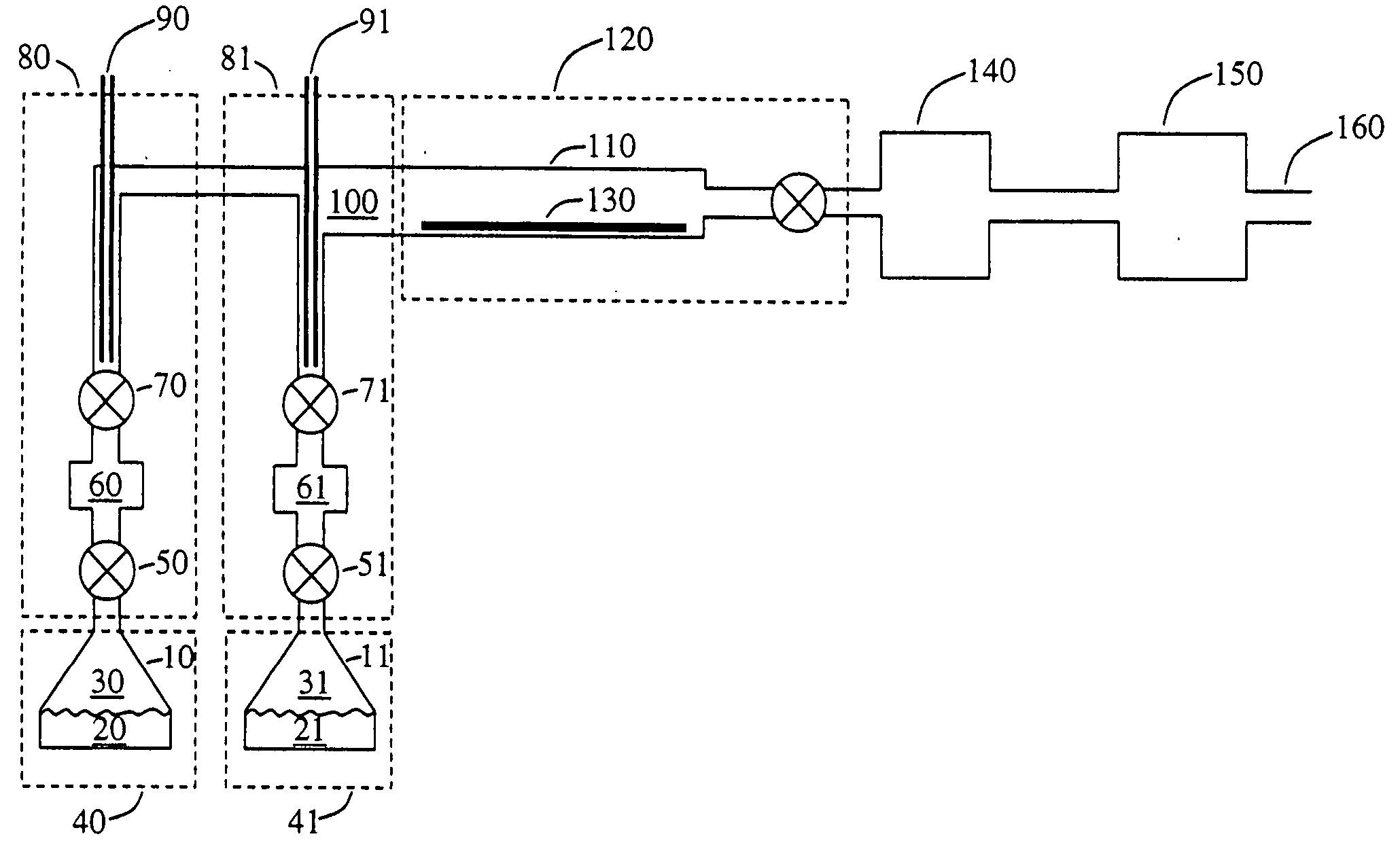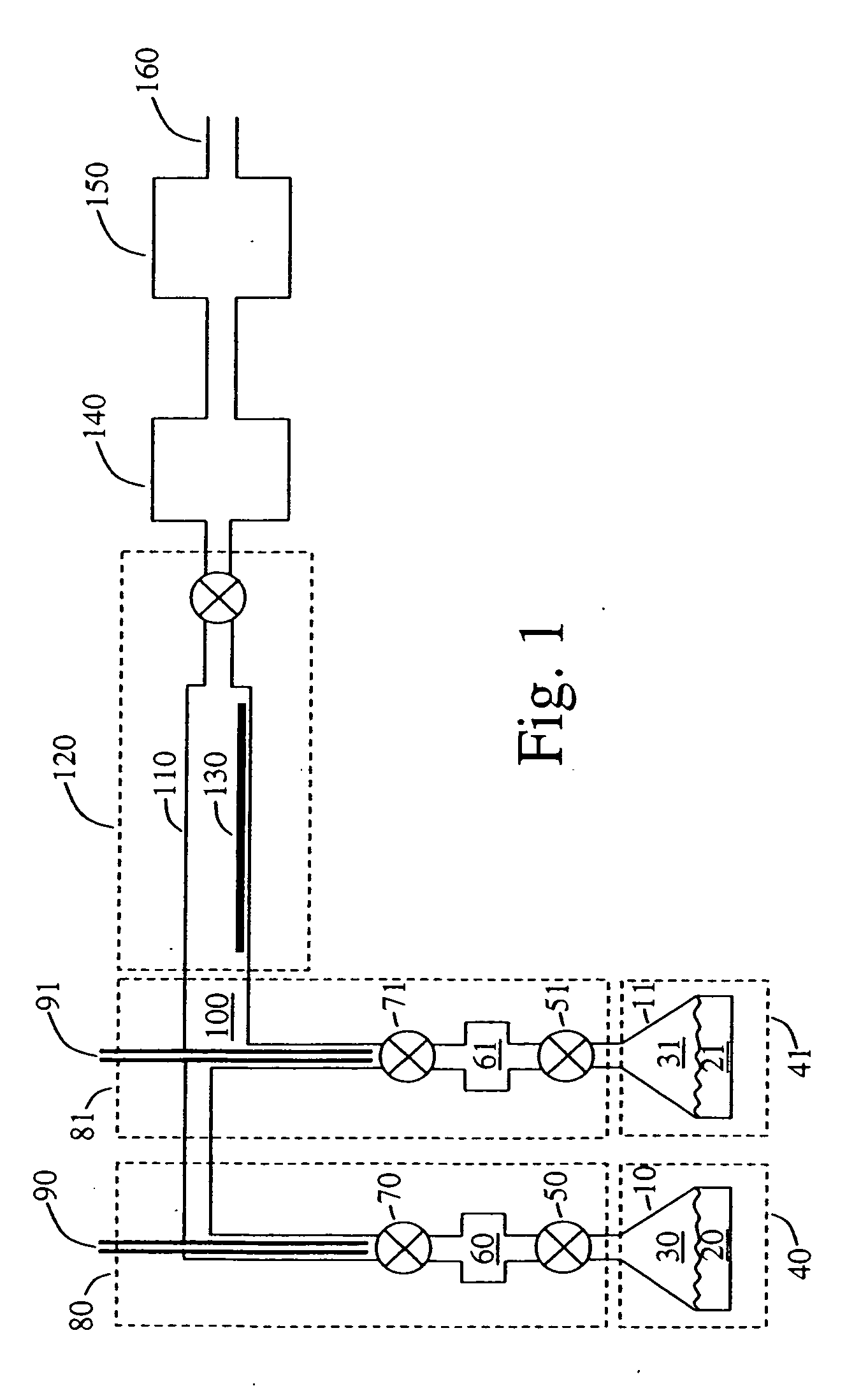Vapor deposition of silicon dioxide nanolaminates
a technology of silicon dioxide nanolaminates and vapor deposition, which is applied in the direction of chemical vapor deposition coating, coating, material nanotechnology, etc., can solve the problems of slow deposition rate, low productivity, and self-limiting reaction of atomic layer deposition reactions, and achieve the effect of facilitating the production of many devices
- Summary
- Abstract
- Description
- Claims
- Application Information
AI Technical Summary
Benefits of technology
Problems solved by technology
Method used
Image
Examples
example 1
Alternating Layer Deposition of Silica / Alumina Nanolaminate
[0102] The apparatus of FIG. 2 was used to deposit silica / alumina nanolaminate films. Tris(tert-butoxy)silanol (“silanol”) was placed in a stainless steel container 201 and heated to 150° C., at which temperature it has a vapor pressure of about 100 Torr. Trimethylaluminum (“TMA”) was held in container 20 at 20° C., so that its vapor pressure was about 14 Torr. A silicon substrate 213 containing holes 7 μm deep and 0.1 to 0.2 μm in diameter was prepared by dissolving its native oxide by placing it in dilute hydrofluoric acid solution for a few seconds. Next the substrate was irradiated by ultraviolet light (e.g. UV mercury lamp) in air until the surface became hydrophilic (about two minutes). Then the substrate 213 was placed in chamber 211 and heated to a temperature of 250° C.
[0103] To deliver pulses of TMA vapor, a three-way valve 217 with inner channels 0.4 mm inner diameter, was opened to TMA vapor for 1 second, durin...
example 2
[0110] Example 1 was repeated, except that the exposure time to silanol vapor was increased from 15 seconds to 90 seconds. Identical results were obtained, showing that the chemical reactions of the silanol were completed within 15 seconds.
example 3
[0111] Example 1 was repeated, except that 100 cycles were used instead of 4 cycles. A film with a uniform total thickness of 1.2 μm (1200 nm) was obtained. This result demonstrated that consistent layers of 12 nm thickness were deposited per cycle for at least 100 cycles.
PUM
| Property | Measurement | Unit |
|---|---|---|
| thickness | aaaaa | aaaaa |
| thickness | aaaaa | aaaaa |
| thickness | aaaaa | aaaaa |
Abstract
Description
Claims
Application Information
 Login to View More
Login to View More - R&D
- Intellectual Property
- Life Sciences
- Materials
- Tech Scout
- Unparalleled Data Quality
- Higher Quality Content
- 60% Fewer Hallucinations
Browse by: Latest US Patents, China's latest patents, Technical Efficacy Thesaurus, Application Domain, Technology Topic, Popular Technical Reports.
© 2025 PatSnap. All rights reserved.Legal|Privacy policy|Modern Slavery Act Transparency Statement|Sitemap|About US| Contact US: help@patsnap.com



